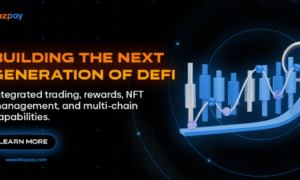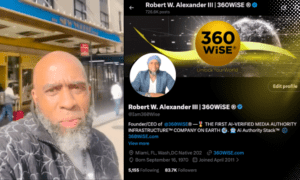Yana Kolesnik is an award-winning marketing strategist and one of Europe’s emerging voices in marketing transformation and business innovation. Based in Germany, she explores how intelligent technologies are reshaping strategy, creativity, and organizational growth across industries.
Through her research Yana helps organizations turn technological potential into meaningful brand growth. Her recent study, Organizational and Technological Barriers to AI-Driven Marketing Strategies in FMCG: Implications for Social Media Campaign Performance Enhancement (Journal of Marketing Analytics, 2025), provides one of the first empirical frameworks explaining why some marketing teams convert innovation into performance while others fall short.As the creator of the concept “conscious implementation,” Yana champions a human-centered and ethical approach to innovation—aligning technology with creativity, transparency, and brand purpose. Recognized for her evidence-based yet human perspective, she represents a new generation of thinkers redefining business transformation—not through technology alone, but through vision, adaptability, and conscious innovation. Her applied projects with leading brands have earned international recognition, including the MarCom Award for innovation in AI-based consumer engagement. Passionate about bridging research and practice, she helps brands turn data into strategy and technology into authentic connection.
You argue that the main barriers to technology adoption in marketing aren’t technical. What does that mean in practice?
When companies talk about being “digitally ready,” they often focus on software, data, or systems. But what I’ve found through my research is that the real barriers usually have little to do with technology.
Many marketing teams already have the tools — automation platforms, analytics dashboards, content engines — but they’re not using them effectively. The problem is usually organizational alignment and confidence, not capability. Teams hesitate to trust new insights or automated suggestions because they rely on what has worked before. That hesitation is human, but it limits innovation.
So in practice, “not technical” means the barriers come from inside the organization — from the way people communicate, make decisions, and share accountability.
What are the most common barriers you’ve seen?
They tend to fall into three categories: organizational, technological, and behavioral.
Organizational barriers are often about structure and mindset. Many brands have digital tools, but not the internal expertise to use them. Some start projects enthusiastically but without a clear strategy for how they’ll connect to business goals or customer outcomes. And, of course, change can be uncomfortable — there’s often quiet resistance from people who fear that technology might replace their creativity or judgment.
Technological barriers are more about the foundations — outdated systems, disconnected data, or unclear performance metrics. When the technology doesn’t talk to each other, or when data is inconsistent, marketers can’t get a clear picture of what’s actually working.
And then there are behavioral barriers — the most human of all. Marketers tend to trust their instincts; that’s what makes them creative. But when that instinct clashes with data, we often default to what feels familiar. Overcoming that requires not just training, but trust — in the process, the tools, and each other.
Many organizations describe themselves as “data-driven.” Why is there often a gap between that ambition and reality?
Because collecting data isn’t the same as using it to make decisions.
A company can have sophisticated analytics systems but still make choices based on gut feeling. I’ve seen teams run digital campaigns without connecting performance data back to sales, engagement, or reach. The insights are there — they’re just not integrated into decision-making.
True transformation happens when marketing, strategy, and leadership work together. It’s not just about dashboards — it’s about creating a shared understanding of what success looks like and how technology supports that journey.
How does leadership behavior shape AI transformation?
Leadership makes or breaks it — especially in marketing.
If leaders frame AI as a threat, something that might “replace” jobs or creative control, people will naturally resist it. But if they present it as a tool that can enhance creativity, decision-making, and campaign effectiveness, adoption skyrockets.
Trust is another big factor. When leaders hand off AI initiatives to technical teams and then disengage, it signals a lack of ownership. And when a model produces an unexpected result — as they inevitably do — that trust collapses.
Leaders don’t need to be data scientists, but they do need AI literacy. They should understand enough to ask smart questions, evaluate risk, and ensure that marketing decisions remain transparent and ethical. That’s how you build confidence and keep teams engaged.
What can organizations do to overcome these barriers?
Start with diagnosis before deployment. Many companies dive headfirst into AI adoption without asking, “Are we ready?” That’s why I developed what I call the Barrier Matrix Framework — a simple way to identify whether the main obstacle is organizational, technological, or behavioral.If the issue is organizational, start with alignment. Define a clear strategy for AI, assign ownership, and create “AI champions” — people who connect marketing and data teams.If the issue is technological, focus on integration and data quality. Many campaigns fail not because of poor creative strategy but because the underlying data is incomplete or outdated. Without reliable data, personalization and targeting simply don’t work.And if the issue is behavioral, focus on building confidence, not just skills. Run small pilot campaigns that prove value, make results visible, and create transparency about how AI decisions are made. When people understand why an algorithm recommends something, they’re far more likely to trust it.Finally, companies should measure confidence as well as competence. It’s possible to have technically skilled teams that still don’t feel comfortable using AI. You can’t fix what you don’t measure.
You often talk about “human-centric AI transformation.” What does that mean in marketing?
It means putting people — not machines — at the center of the transformation.AI can analyze data, predict behaviors, and optimize ad placements, but it can’t feel emotions or understand cultural context. In marketing, those human elements matter deeply. You can automate engagement, but you can’t automate empathy.For example, an algorithm might decide that a controversial ad gets high engagement, but only a human can sense whether that engagement comes from positive interest or backlash. That’s why AI should assist, not replace, human creativity.The best marketing organizations use AI as a strategic partner: it handles speed and scale, while humans guide meaning, ethics, and authenticity.
What future trends do you see in AI adoption for marketing organizations?
I see two parallel movements. On one hand, AI democratization — AI tools are becoming easier to use, cheaper to access, and more embedded in everyday marketing platforms. Even small businesses can now automate content or analyze consumer sentiment in real time.On the other hand, we’ll see ethical and psychological challenges intensify. The second shift is ethical and emotional awareness. As AI becomes central to marketing, questions about bias, transparency, and consumer trust will grow louder. Marketers will need to think not just about what AI can do, but what it should do — especially when campaigns target emotions and personal data.Organizations that invest early in AI literacy and ethical awareness will outperform those focused only on speed or scale. The companies of the future won’t just be “AI-enabled” — they’ll be AI-conscious.
What motivates you personally to study this topic?
I’ve always been fascinated by the intersection of technology, psychology, and marketing — how innovation succeeds or fails based on how people perceive it. When I worked in marketing, I saw firsthand that resistance to data-driven tools rarely comes from lack of skill. It usually comes from fear or uncertainty. People worry that technology will make their expertise irrelevant, when in fact it can make their work more creative and impactful.That realization shaped my research: helping organizations close the gap between AI potential and human readiness. My goal is to show that AI doesn’t replace human intelligence — it amplifies it.At the end of the day, AI doesn’t transform marketing — people do. Technology is the instrument. Culture, leadership, and trust are the conductors.



































